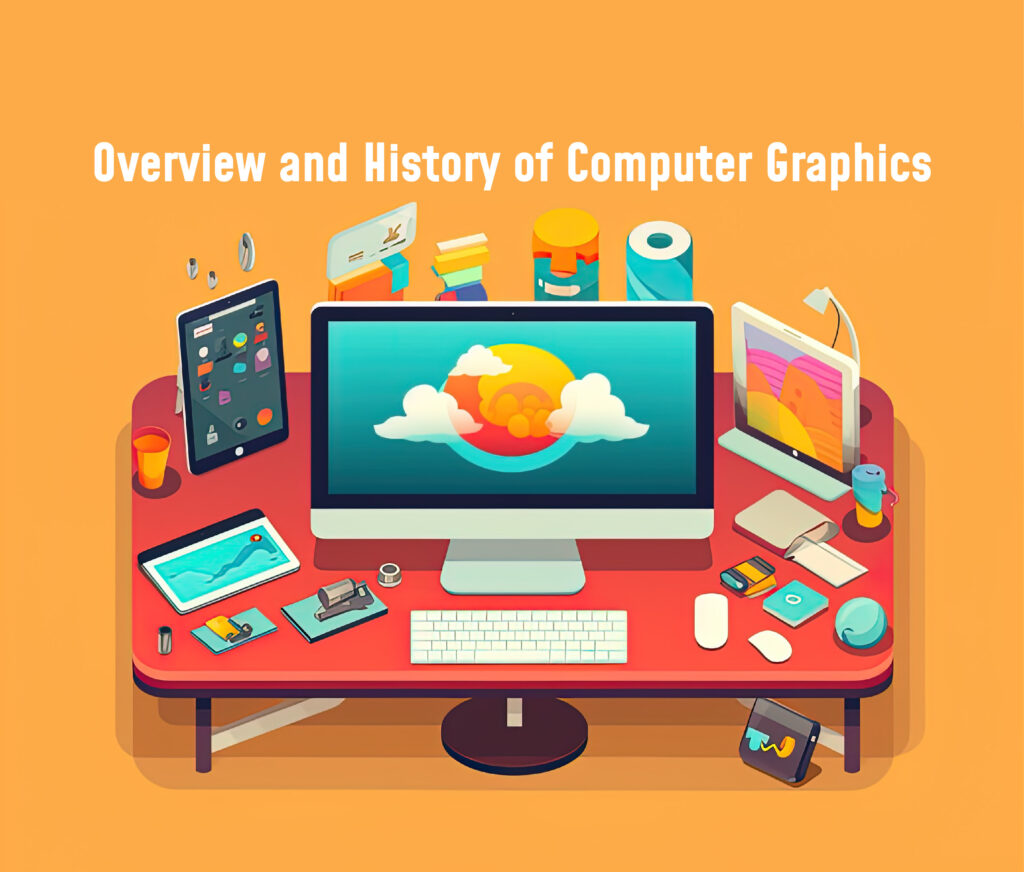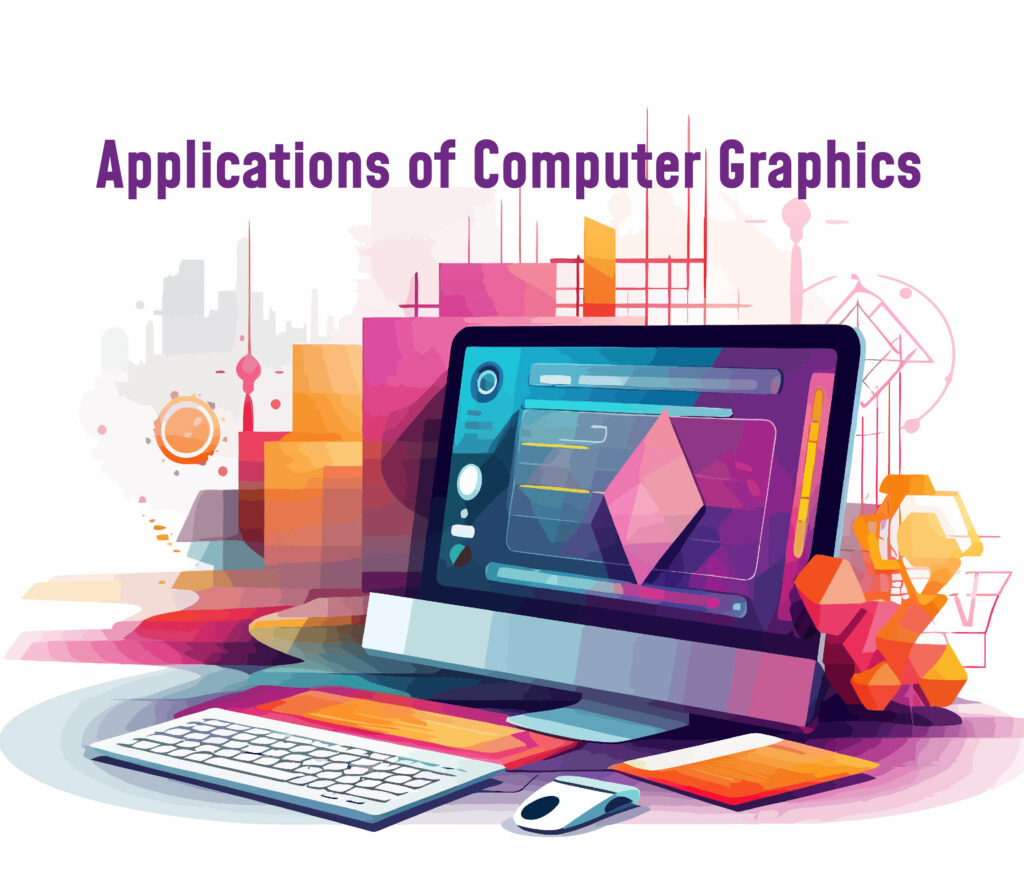Are you fascinated by the captivating visuals in movies, video games, and digital art? Have you ever wondered how those breathtaking graphics are created? In this comprehensive blog, we’ll take you on a journey through the history, concepts, and applications of computer graphics. From its humble beginnings to its revolutionary impact on various industries, we’ll uncover the secrets behind this dynamic field.
Whether you’re a beginner seeking to grasp the basics or an aspiring professional looking to dive deeper, this blog is designed to equip you with the knowledge and skills you need.
Introduction to Computer Graphics
Computer graphics is an ever-evolving field that plays a crucial role in today’s digital world. It involves the creation, manipulation, and representation of visual elements using computers.
In its simplest form, computer graphics cards can be defined as the synthesis and manipulation of images on a computer screen. It encompasses the generation of 2D and 3D graphics, animations, and visual simulations. These digital representations are created using specialized software programs and algorithms, allowing for the creation of stunning visual experiences.
It has found applications in a wide range of fields, including entertainment, design, architecture, medicine, and scientific visualization. It enables us to visualize complex data, communicate ideas effectively, and create immersive virtual environments. The advancements in computer hardware and software have revolutionized the field, allowing for more realistic and interactive graphics.
Overview and History of Computer Graphics
 Computer graphics is a rapidly evolving field that has transformed various industries and revolutionized the way we interact with digital content. From stunning visual effects in movies to realistic simulations and immersive virtual reality experiences, it plays a crucial role in shaping the visual landscape of the modern world.
Computer graphics is a rapidly evolving field that has transformed various industries and revolutionized the way we interact with digital content. From stunning visual effects in movies to realistic simulations and immersive virtual reality experiences, it plays a crucial role in shaping the visual landscape of the modern world.
Subfields within Computer Graphics
Understanding these subfields provides a deeper insight into the diverse applications and techniques of this field. Here are some key subfields:
- Geometry: It is a fundamental subfield that deals with the mathematical representation and manipulation of shapes and objects. It focuses on algorithms and techniques for rendering three-dimensional (3D) models, handling transformations, and performing operations such as intersection tests and collision detection.
- Animation: This involves bringing digital objects to life through the simulation of movement and motion. This subfield encompasses techniques for character rigging, keyframe animation, motion capture, and physics-based simulations. Animators employ software tools and algorithms to create fluid and captivating motion in games, movies, and interactive media.
- Rendering: This process involves the generation of realistic and visually appealing images from 3D models or scenes. It involves simulating the behavior of light and materials to create realistic lighting, shadows, reflections, and textures. Rendering techniques include ray tracing, rasterization, and global illumination algorithms that strive to deliver high-quality visuals in real-time or offline applications.
- Image Processing: It deals with the manipulation and enhancement of digital images. It encompasses tasks such as image compression, noise reduction, image filtering, and image enhancement. Image processing techniques are widely used in photography, medical imaging, computer vision, and various other domains.
- Visualization: It focuses on representing complex data sets in a visual format, enabling users to perceive patterns, trends, and insights that would otherwise be difficult to discern. This subfield is closely related to data visualization, scientific visualization, and information visualization. It involves techniques for creating interactive and informative visualizations to aid data analysis, scientific exploration, and communication of information.
- Virtual Reality (VR) and Augmented Reality (AR): VR and AR are rapidly growing subfields that leverage graphics to create immersive virtual experiences or enhance real-world environments with virtual objects. VR immerses users in fully virtual surroundings, while AR overlays digital content onto the real world. Both these technologies rely heavily on graphics to render and display realistic virtual elements in real-time.
Applications of Computer Graphics
 Let’s explore some of the key applications of computer graphics that have reshaped our world.
Let’s explore some of the key applications of computer graphics that have reshaped our world.
- Animation and Entertainment
From feature films and television shows to video games and advertisements, computer-generated imagery (CGI) has allowed creators to bring their visions to life with stunning visuals. The seamless integration of these graphics enhances storytelling, enables the creation of fantastical worlds, and delivers captivating visual experiences for audiences.
- Graphic Design and Advertising
Graphic design and advertising offer endless possibilities for creating visually striking and engaging content. Designers utilize various software programs to manipulate images, combine elements, and experiment with different styles and layouts. This facilitates the creation of eye-catching logos, advertisements, and marketing materials that effectively communicate messages to target audiences.
- Architecture and Visualization
Through the use of 3D modeling, rendering, and virtual reality technologies, architects can create accurate and realistic representations of buildings and spaces before they are constructed. This enables stakeholders to better understand and visualize the final product, aiding in decision-making and improving the overall design process.
- Education and Training
The field of computer graphics has also made a significant impact on education and training. Virtual simulations and interactive visualizations allow students and professionals to explore complex concepts and scenarios in a safe and controlled environment. Whether it’s medical training, flight simulations, or virtual laboratories, these graphics provide immersive and effective learning experiences.
- Scientific Visualization
Scientists and researchers leverage graphics to visually represent complex data and phenomena. Through visualization techniques, such as volume rendering and data-driven modeling, intricate scientific concepts can be effectively communicated to a wider audience. This aids in the analysis and interpretation of data, leading to further discoveries and advancements across various scientific fields.
Winding Up
As technology continues to advance, the applications of computer graphics will only continue to expand and evolve. From entertainment to education, advertising, architecture, and beyond, graphics have become an integral part of our daily lives, shaping the way we perceive and interact with the world around us. By harnessing its power, we can create captivating visuals and unlock new possibilities across countless industries.


